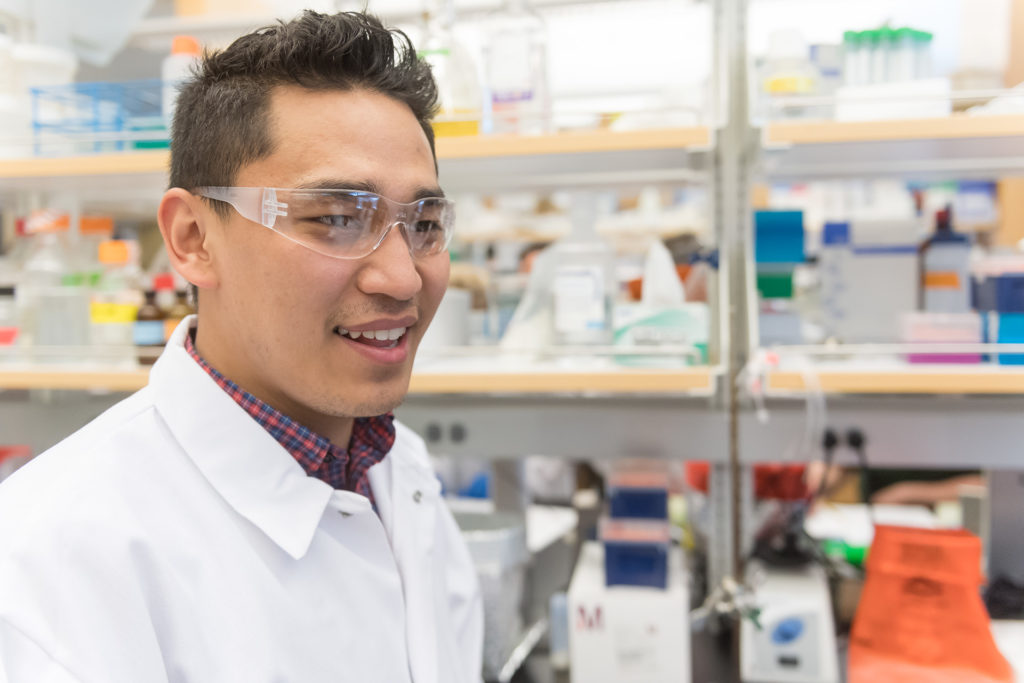
Twenty-six-year-old tuberculosis survivor Tenzin Kunor spent 139 days confined to his home while being treated for multidrug-resistant TB, but he’s making up for that isolation by speaking publicly about his ordeal.
Kunor came to CSU’s World TB Day event on March 24 to share his perspective with researchers and visiting high-school students. He also gained insight into CSU’s acclaimed multidisciplinary research conducted to fight the disease that affects 60 million people around the world, including 10,000 in the United States. Each year, 1.8 million people die of tuberculosis worldwide.
Colorado State is home to the largest contingent of TB researchers in the country, and its annual World TB Day event opens the CSU Mycobacteria Research Laboratories to high-school students for an in-depth look at its cutting-edge research.
Along with about 70 high-school students, Kunor participated in hands-on activities in the labs: looking into microscopes to see infected lung tissue, using pipettes to transfer samples, and donning “bunny suits,” the personal protective equipment worn by researchers who work with highly infectious pathogens in the Biosafety Level 3 laboratories.
“It opened my eyes to all the work being done to fight TB,” Kunor said.
“It can be difficult to share your story”
Three years ago, after six months of coughing, sore throat and chest pain, Kunor was diagnosed with multidrug-resistant TB at the age of 23. He was a senior at the University of Wisconsin-La Crosse, and in the space of a month, he went from an active student leader, to hospital quarantine, to a housebound patient with a peripherally inserted central catheter, or “PICC” line, in his arm. He moved home to Madison so his parents could care for him.
He told almost no one.
“It can be difficult to share your story. I didn’t share it with people when I was going through it because I was worried about what people would think, and that they wouldn’t want to be around me. It took me until I was done with treatment to speak publicly,” Kunor said. “Being taken away from society, from a college campus where I was constantly interacting with people, to being alone in a room, was really difficult.”
He watched a lot of Netflix.
Student reactions to World TB Day
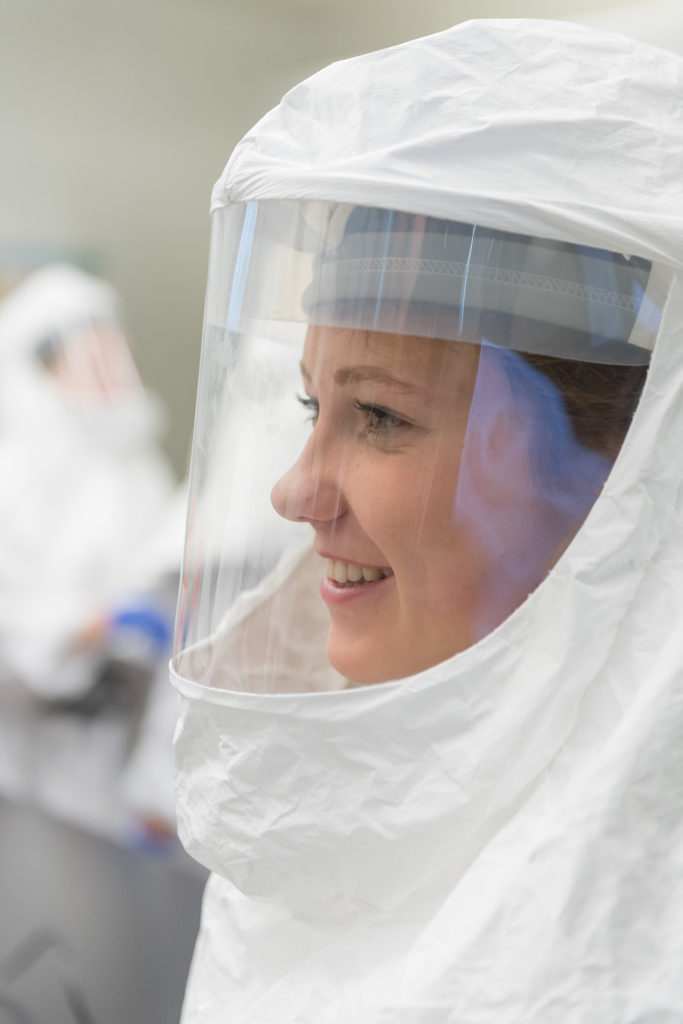
Maddy Chong, a Fossil Ridge sophomore who plans to study molecular or biomedical engineering in college, said, “I really liked being in the laboratories and seeing the real-life procedures.”
Her classmate Kyle Kirkby plans to study pre-med, and said he enjoyed “learning about all the protocols they follow in the laboratory.”
The students from Fossil Ridge High School just finished studying genetic engineering. “It was a really unique experience for them to see the different applications for what we’ve been learning,” said their teacher, Karen Giesler. “The keynote speaker’s personal account brought it full-circle for my students.”
Aileen Gonzalez-Perez, a sophomore at Fort Collins High School, who plans to become a doctor, was impressed with “how everyone has their own area of research, and how they all help each other.” Her favorite demo: coughing into a handful of Glo-Germ under a black light to show how far germs spread when a person coughs. “We’re surrounded by people daily, and it’s crazy what we don’t know.”
“It gave me a sense of how big the scope of TB really is. I really hadn’t heard much about it before now,” said Colton Gealy, a junior at Poudre High School.
“I came to CSU because it’s known for research opportunities for undergraduate students. It’s been such good technical experience, and I learned I actually like working in a lab,” said Cassidy Hagan, a senior microbiology major who has worked in Angelo Izzo’s lab since her sophomore year at CSU. Her advice to high school students: “Take all the opportunities you can. People are willing to help you out – you just have to ask.”
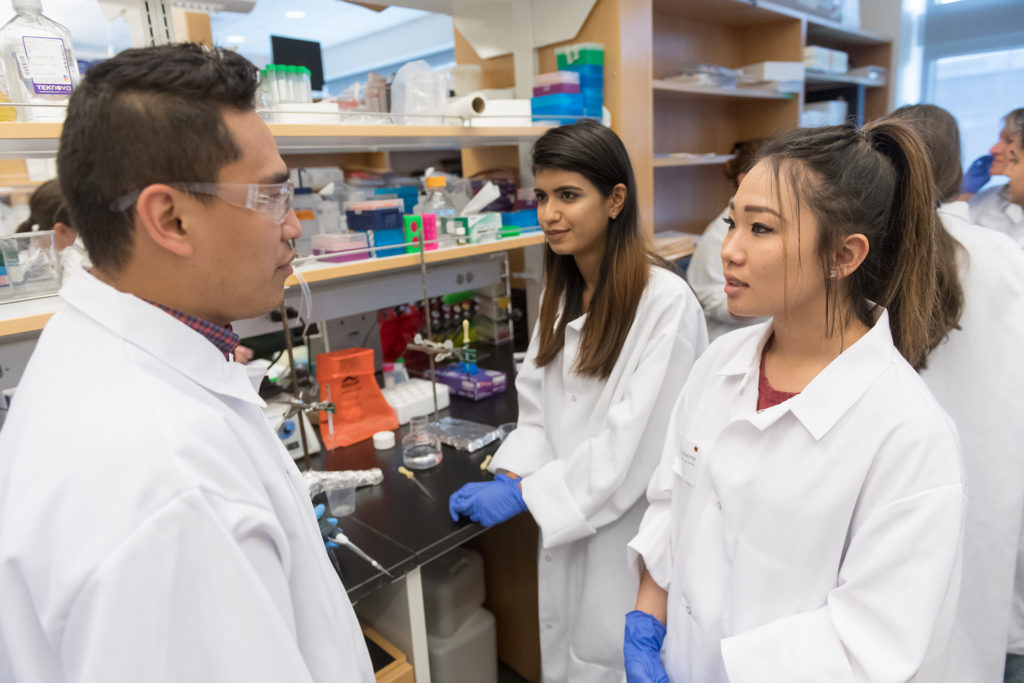
To fight the antibiotic-resistant bacteria, he took nine different drugs, totaling more than 8,000 pills over his two-year course of treatment. Because he had the drug-resistant strain of TB, he took more toxic medications that caused a host of side effects. He was nauseous, fatigued and anxious. He lost vision and hearing, and developed painful neuropathy in his feet.
“I struggled a lot with side effects. I’m so grateful to have access to these drugs, but at the same time, they made me feel like crap,” said Kunor, who has recovered and now works as an assistant director of residential life at Amherst College in western Massachusetts.
For the researchers who focus on the bacteria, Kunor’s visit was a chance to hear how people deal with TB. High-schoolers touring the labs learned that TB can affect someone just like them, and that they could join in the fight to beat it.
“Despite all our years of dedication to studying tuberculosis, it’s humbling to meet a person directly affected by this disease, and to realize we’ve barely scratched the surface on improving health outcomes for TB patients,” said Karen Dobos, a TB investigator and co-organizer of the World TB Day activities at CSU.
Bringing lab science to life
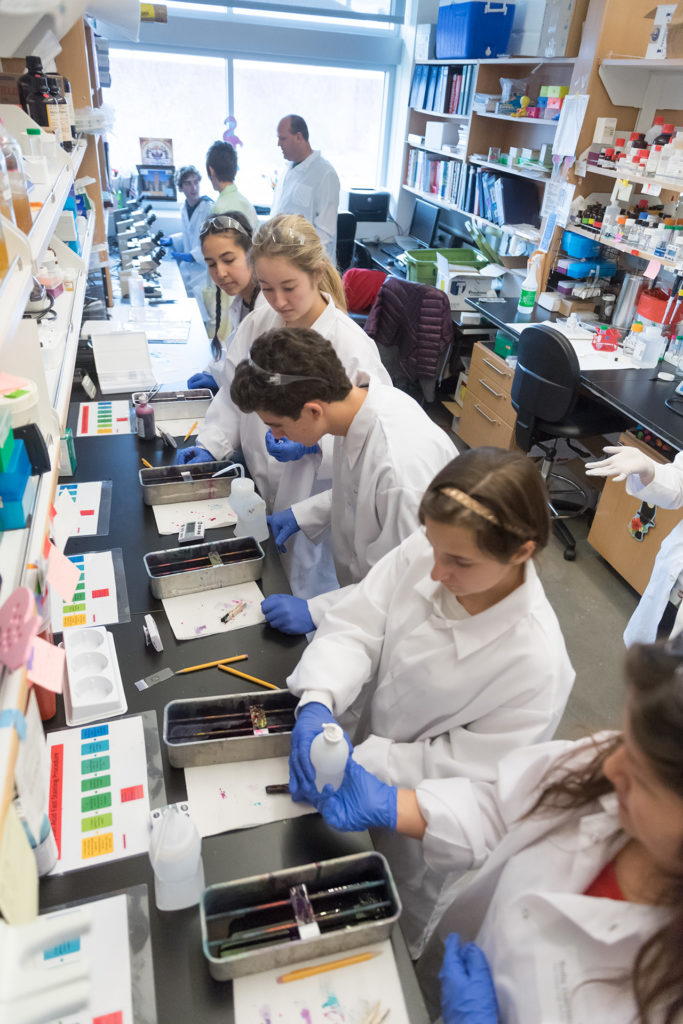
The Mycobacteria Research Laboratories comprises 168 research personnel, who collaborate on new scientific discoveries, vaccines, methods of diagnosis, and therapeutic agents.
One of professor Dean Crick’s graduate assistants, Fabio Fontes, demonstrated how to separate natural compounds from flowers as a way to illustrate the search for new antibiotics. “Antibiotics are found in nature in different forms, so we are looking for the building blocks of new antibiotics. We modify them to create better drugs, but then the bacteria become resistant, so we have to keep looking,” Fontes explained. The latest drug to fight TB has already met resistance from its bacterial foe.
Researchers Anita Amin and Prithwiraj De, in Delphi Chatterjee’s laboratory, showed how a biomarker for mycobacteria glows under fluorescent light, a process they hope to develop into a new diagnostic tool that would speed up test results, from a month to overnight. “It would be a big step forward in diagnostics,” Amin told the students.
Susan Hunter, director of the Bioscience Career Academy at Fort Collins High School, brought her students to demonstrate “how many career possibilities there are in the effort to help people be healthy, and students are not aware of the myriad career options out there, especially in biotech. The more exposure they have to different careers, the more they think, ‘That might be for me.’”
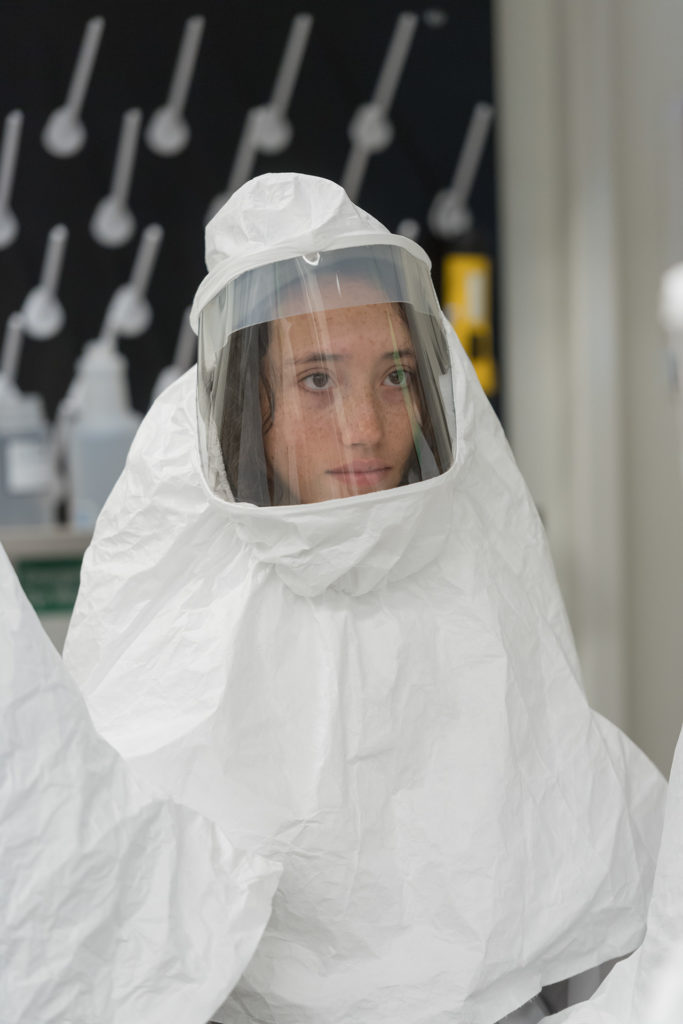
“This might be for you” was the message from university leaders as well. “We need all sorts of backgrounds to make this happen, the more diversity the better,” Mary Jackson, director of the Mycobacteria Research Laboratories, told the students.
Alan Rudolph, CSU’s vice president for research, echoed that idea in his introduction to Kunor’s talk: “Science is moving to an appreciation of the interdisciplinary approach to solving problems. It’s important to have the patient – the consumer who is intimately involved with treatment – at the table with TB researchers who are thinking about how to translate their discoveries to the people who will be using the products. Tenzin is a really important voice for what’s it’s like to be a patient.”
World TB Day
The global event marks Dr. Robert Koch’s discovery of Mycobacterium tuberculosis as the cause of TB on March 24, 1882. Koch was a German physician known as the founder of modern bacteriology; he won a Nobel Prize for his work.
Mycobacteria Research Laboratories
The MRL, in the Department of Microbiology, Immunology, and Pathology of the College of Veterinary Medicine and Biomedical Sciences, houses more than 150 scientific investigators, staff and students working on innovations to diagnose, prevent, and treat tuberculosis and related diseases. They compose the largest group of university researchers in the world focused entirely on this category of infectious disease.
Why Colorado?
Our state has historical ties to TB: In the early 1900s, Colorado was called the “World’s Sanatorium” because TB patients came here in droves, seeking remedy from sunshine and clean, dry air. The CSU veterinary program, founded in 1907, focused on eradicating tuberculosis from dairy cattle because infected animals can transmit TB to people through raw, unpasteurized milk.